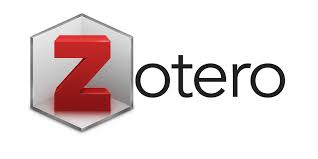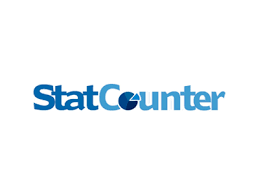Pengembangan Media Pembelajaran Video Interaktif Berbasis Power Director pada Materi Luas Segitiga
DOI:
https://doi.org/10.29240/ja.v3i2.3115Keywords:
Learning Media, Power Director, Triangle ProblemAbstract
This study aims to determine the validity and effectiveness of interactive video learning media based on Power Director in the area of the triangle material. The research approach used is the Research and Development (RnD) approach with the ADDIE (Analyze, Design, Development, Implementation, Evaluation) development model. The subjects in this study were class X-TOT 1 (control class) and class X-TOT 2 (Experimental Class). Methods of data collection using questionnaires and tests. Questionnaires were used to obtain media validity data and tests were used to determine the effectiveness of using media. The results showed that the Power Director-based interactive video learning media was valid for use with a media validity value of 3.02 and a material validity value of 3.7. The results of the t-test calculation carried out obtained a value of 0.001 <0.05 which indicates that there is a significant difference between the control class and the experimental class in the use of Power Director-based learning media. So, Power Director-based interactive video learning media is effectively used because it can improve student learning outcomes in solving the area of the triangle problem.
Downloads
References
Cahdriyana, R. A., & Richardo, R. (2020). Berpikir Komputasi Dalam Pembelajaran Matematika. LITERASI (Jurnal Ilmu Pendidikan), 11(1), 50. https://doi.org/10.21927/literasi.2020.11(1).50-56.
Elsyam, F. G., Safitri, S., & Susanti, R. (2019). Pengembangan Media Pembelajaran Berbasis Program Cyberlink Power Director pada Mata Pelajaran Sejarah di Sekolah Menengah Atas. Universitas Sriwijaya. repository.unsri.ac.id.
Fathoni, A. R., & Budiman, E. (2017). Media Pembelajaran Ipa Pokok Bahasan Sistem Pencernaan Makanan Sesuai Standar Kompetensi. 1(1). https://doi.org/10.31227/osf.io/qp2d7.
Hobri. (2010). Metodologi Penelitian Pengembangan (Aplikasi pada Penelitian Pendidikan Matematika). Pena Salsabila.
I Made Tegeh dan I Made Kirna (2010). Metode Penelitian Pengembangan Pendidikan. Universitas Pendidikan Ganesha.
Ilsa, Aulya, Farida, F., & Harun, M. (2021). Pengembangan Video Pembelajaran dengan Menggunakan Aplikasi Power Director di Sekolah Dasar. Jurnal Basicedu, 5(1), 288–300.
Muhasim. (2017). Pengaruh Tehnologi Digital Terhadap Motivasi Belajar Peserta Didik. Palapa: Jurnal Studi Keislaman Dan Ilmu Pendidikan, 5(2), 53–57. http://marefateadyan.nashriyat.ir/node/150.
Nomleni, F. T., & Manu, T. S. N. (2018). Pengembangan Media Audio Visual dan Alat Peraga dalam Meningkatkan Pemahaman Konsep dan Pemecahan Masalah. Scholaria: Jurnal Pendidikan Dan Kebudayaan, 8(3), 219–230. https://doi.org/10.24246/j.js.2018.v8.i3.p219-230.
Nurfa, A. (2012). Penggunaan Alat Peraga Sistem Pernapasan Manusia Pada Kualitas Belajar Siswa SMP Kelas VIII. IV(1), 8–9.
Nurrita, T. (2019). Development of circle learning media to improve student learning outcomes. Journal of Physics: Conference Series, 1321(2), 171–187. https://doi.org/10.1088/1742-6596/1321/2/022099
Putria, H., Maula, L. H., & Din Azwar Uswatun. (2020). Analisis Proses Pembelajaran dalam Jaringan (DARING) Masa Pandemi Covid-19 pada Guru Sekolah Dasar. Jurnal Basicedu, 4(4), 861–872.
Rajaguguk, W. (2011). Perbedaan Minat Belajar Siswa Dengan Media Komputer Program Cyberlink Power Director dan Tanpa Media Komputer pada Pokok Bahasan Kubus dan Balok di Kelas VIII SMP Negeri 1 Hamparan perak Tahun Ajaran 2009/2010. Jurnal Pendidikan Matematika, 5(2), 205–220.
Downloads
Additional Files
Published
Issue
Section
Citation Check
License
Authors who publish with ARITHMETIC: Academic Journal of Math agree to the following terms:
- Authors retain copyright and grant the journal right of first publication with the work simultaneously licensed under a Creative Commons Attribution-NonCommercial-ShareAlike 4.0 International License (CC BY-NC-SA 4.0) that allows others to share the work with an acknowledgment of the work's authorship and initial publication in this journal.
- Authors are able to enter into separate, additional contractual arrangements for the non-exclusive distribution of the journal's published version of the work (e.g., post it to an institutional repository or publish it in a book), with an acknowledgment of its initial publication in this journal.
- Authors are permitted and encouraged to post their work online (e.g., in institutional repositories or on their website) prior to and during the submission process, as it can lead to productive exchanges, as well as earlier and greater citation of published work (See The Effect of Open Access).







